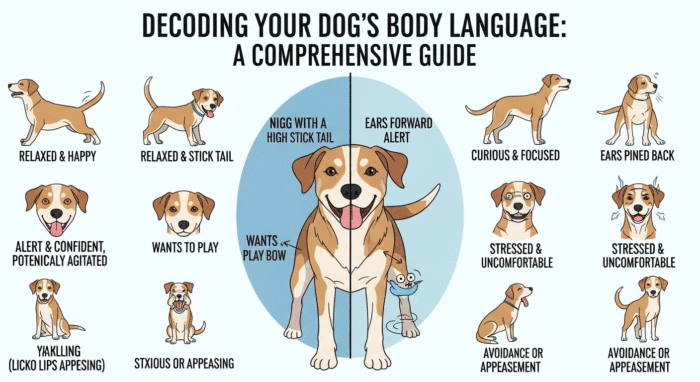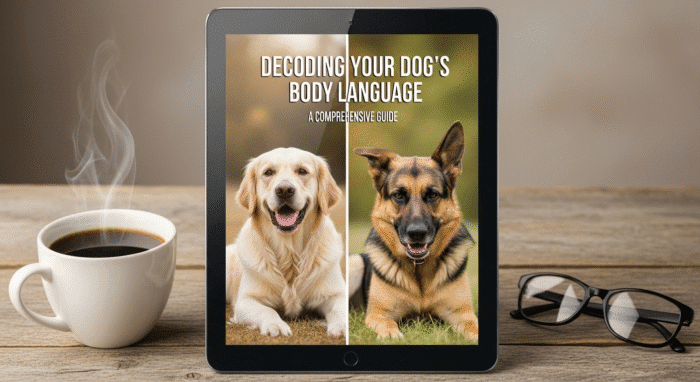Ever find yourself staring at your dog, head tilted, wondering what in the world they’re trying to tell you? I’ve been there. We all have, right? It’s like they’re speaking a different language, a language of wags, whines, and the occasional zoomie. And you know what? They are. It’s just that the grammar is all in their ears, tail, and the way they hold their mouth.
I remember when I first got my golden retriever, Gus. A fluffy tornado of pure, unadulterated joy. He was… expressive, to say the least. I thought I understood him, you know? Tail wagging = happy. But it didn’t take long to realize that a tail wag could mean a whole bunch of things. Sometimes it meant, “I’m happy!” Other times it meant, “I’m excited!” And occasionally it meant, “I’m about to destroy your favorite shoes!”
The frustrating thing about dog body language is that it’s not always straightforward. There’s context, breed-specific quirks, and the individual personality of your dog to consider. But here’s the thing, learning to read your dog’s body language is like unlocking a secret code. It deepens your bond, helps you understand their needs, and prevents potential problems. It’s more than just knowing when they want a treat; it’s about understanding their emotional state.
Table of Contents
The Tail Tells a Tale (Mostly)

Let’s start with the obvious: the tail. The classic wagging tail is often equated with happiness, and while that’s frequently true, it’s not the whole picture. Think of it more as a general sign of arousal. A high, fast wag often indicates excitement, while a lower, slower wag can signal insecurity or submission. A tucked tail? Definitely not a happy camper. That usually means fear or anxiety.
But wait, there’s more! The position of the tail matters too. A tail held high and stiff can indicate alertness or even aggression. A relaxed, neutral tail is generally a good sign. And some dogs, like sighthounds, naturally have lower tail carriage, so you have to learn what’s normal for your dog. The American Kennel Club provides a lot more information about interpreting tail wags, actually.
I’ve got to admit, this part fascinates me. It’s like they’re constantly communicating, even when they’re not barking or whining.
Ears: The Original Radar Dishes
Ears are surprisingly expressive. Think of them as tiny radar dishes that can swivel and tilt to pick up all sorts of signals. Ears pricked forward usually indicate alertness, curiosity, or even aggression. Ears flattened back against the head typically signal fear, submission, or anxiety. And ears held loosely to the side? That’s usually a sign of relaxation.
But – and this is important – pay attention to the whole picture. Flattened ears combined with a tucked tail and whale eye (when you can see the whites of their eyes) is a clear sign of stress. Ignoring these subtle signals can lead to problems down the line.
Let me try to explain this more clearly: Imagine your dog meets a new person. Their ears are slightly back, their tail is tucked a little, and they keep licking their lips. They’re not necessarily going to bite, but they’re saying, “I’m uncomfortable here.” Pushing them to interact could lead to a negative experience. Instead, give them space and let them approach on their own terms. Understanding your dog’s breed tendencies is important too because some breeds are more naturally inclined to react a certain way than others.
Decoding the Eyes and Mouth
The eyes are the windows to the soul, right? Well, they’re also windows into your dog’s emotional state. Direct eye contact can be perceived as a challenge or threat, especially from a dog you don’t know. Averting the gaze is often a sign of submission or appeasement. And, as I mentioned earlier, “whale eye” – when you can see the whites of their eyes – is a sign of stress or discomfort. Keep an eye out for that one.
The mouth offers clues too. A relaxed, slightly open mouth is generally a good sign. Lip licking or yawning (when they’re not tired) can be displacement behaviors, meaning they’re trying to relieve stress. And of course, a snarl is a clear warning sign.
Wait, there’s something even more interesting here…Dogs will also pant when they’re hot, but excessive panting can also indicate anxiety or pain. Again, context is key.
Body Posture and Movement
How your dog carries themselves speaks volumes. A confident dog will stand tall with their weight evenly distributed. A fearful dog might crouch down, trying to make themselves smaller. And a playful dog? Well, they might give you a play bow – front legs down, butt in the air – inviting you to join in the fun.
Sudden changes in movement can also be telling. A dog who suddenly freezes might be unsure or worried. A dog who’s constantly pacing might be anxious or restless.
But think about it this way: they aren’t simply thinking, breathing organisms. Their movements and posture mean so much more than that – it expresses everything that they are feeling. And that’s the beauty of it all.
And consider how a dog’s body language might change as they age.
FAQ: Decoding Your Canine Companion
How do I know if my dog is stressed?
Ah, the million-dollar question! Stress in dogs can manifest in various ways. Look for subtle signs like lip licking, yawning (when they’re not tired), whale eye, flattened ears, tucked tail, and panting (when they’re not hot). More obvious signs include shaking, hiding, and destructive behavior. If you notice these signs, try to identify the source of stress and remove your dog from the situation. If the stress is chronic, consult with a veterinarian or certified dog behaviorist.
Why does my dog wag their tail when I’m scolding them?
This is a common misconception! A wagging tail doesn’t always mean happiness. In this context, it’s more likely a sign of appeasement or submission. Your dog is essentially saying, “I know I messed up, please don’t hurt me!” It’s important to respond with calm reassurance, not anger, to avoid further stressing your dog. Positive reinforcement is always more effective than punishment.
How can I improve my dog’s body language?
Actually, you can’t really improve your dog’s body language. It’s their natural way of communicating. What you can do is improve your understanding of it! Spend time observing your dog in different situations. Pay attention to their posture, facial expressions, and tail movements. Learn to recognize the subtle signs of stress, fear, and anxiety. The more you understand your dog’s body language, the better you’ll be able to respond to their needs and build a stronger bond.
My dog is growling. Should I punish them?
Absolutely not! Growling is a warning sign. Your dog is telling you, “I’m uncomfortable, please back off!” Punishing a growling dog will only suppress the behavior, which can lead to them biting without warning in the future. Instead, try to identify the cause of the growl and remove your dog from the situation. For example, if your dog growls when you try to take their food, give them space while they’re eating. If the growling is frequent or aggressive, consult with a certified dog behaviorist. Understanding games that feature dogs can help give you more insight into dog behaviour and tendencies.
Is decoding dog body language the same for every breed?
While there are general guidelines, breed-specific traits can influence body language. For example, breeds with naturally docked tails or cropped ears may have limited ability to communicate through these signals. Similarly, breeds with thick fur may have less expressive facial features. It’s important to research the specific characteristics of your dog’s breed and tailor your interpretation accordingly. Observe your dog closely to understand what is normal for them.
So, there you have it – a (hopefully) comprehensive guide to decoding your dog’s body language. Remember, it’s not an exact science. Context, individual personality, and breed-specific quirks all play a role. But with a little patience and observation, you can unlock the secrets of your canine companion and build a deeper, more meaningful relationship. Now, go give your furry friend a scratch behind the ears (if they seem receptive, of course!).

